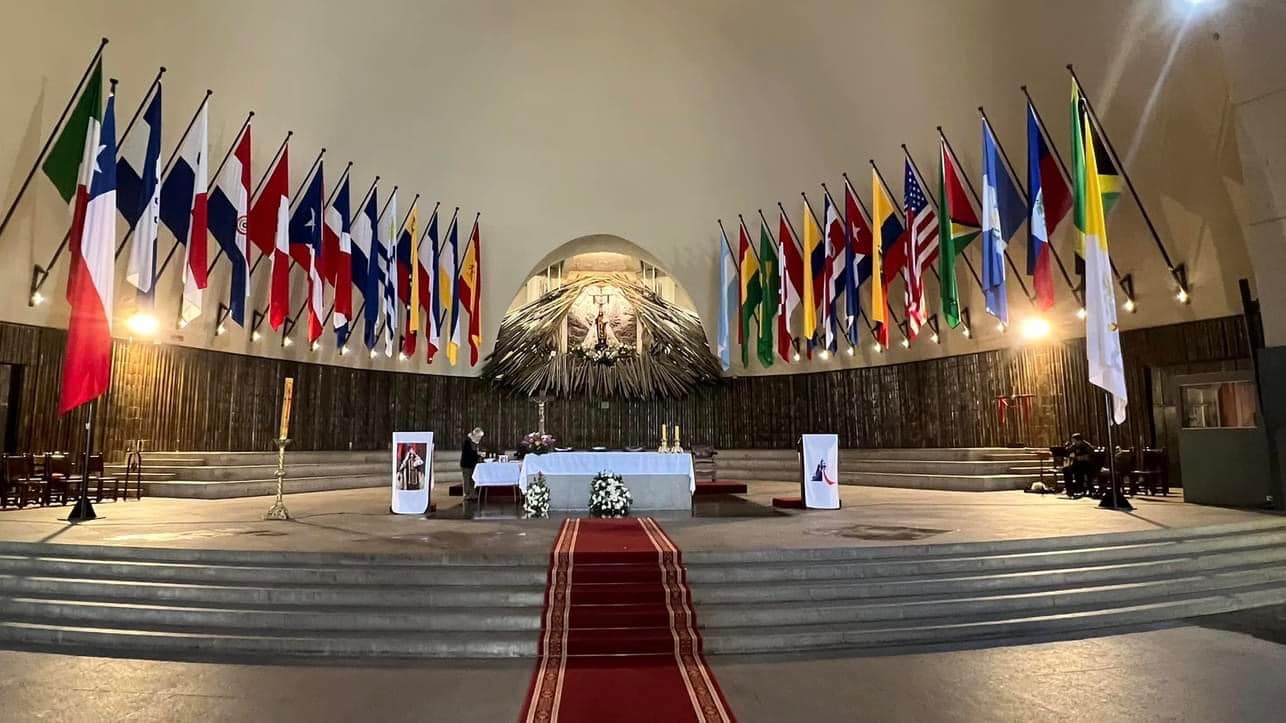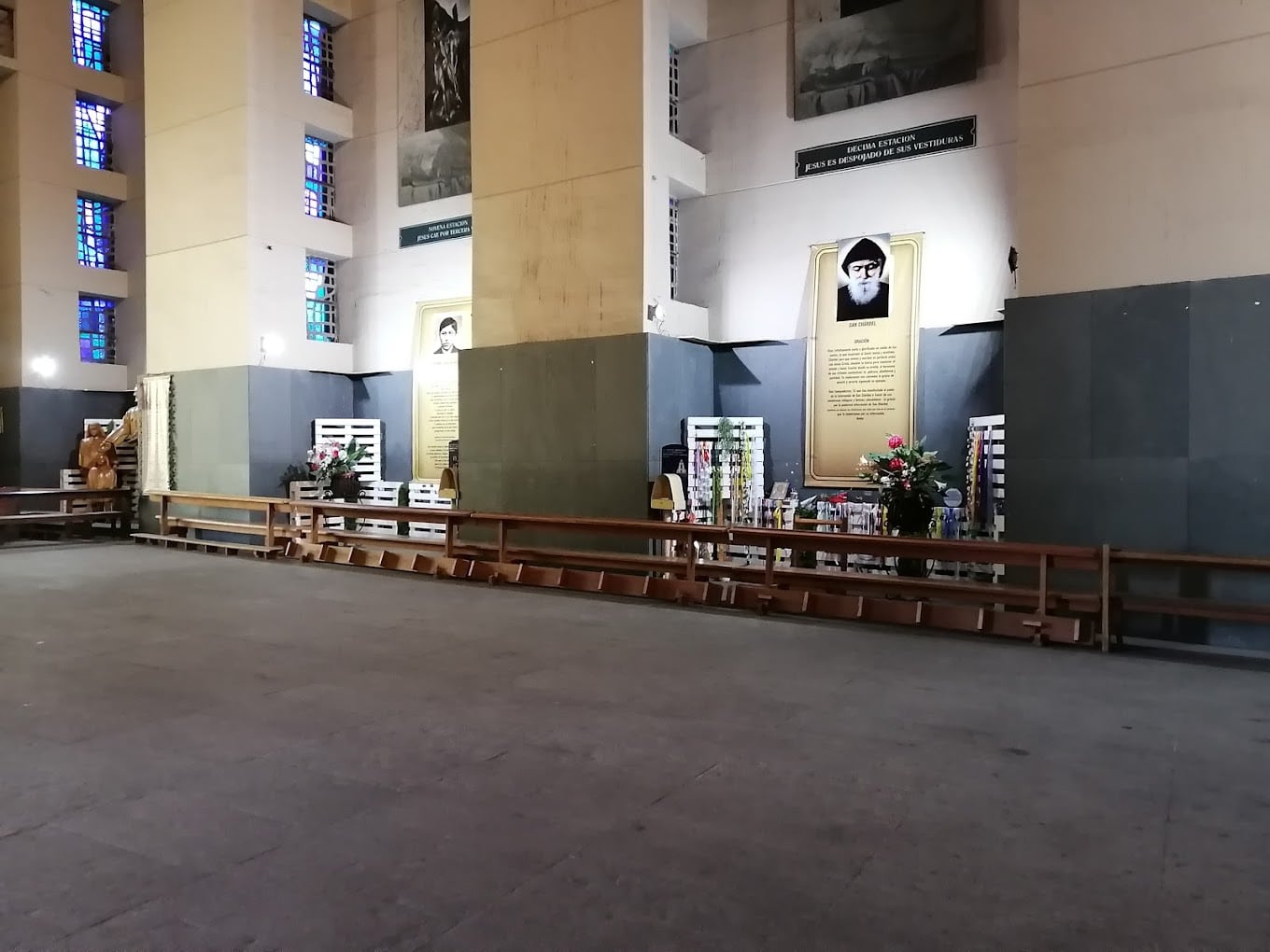In Chile, July 16 is a holiday. This is because it is the date dedicated to the patroness of the nation, Our Lady of Mount Carmel. The Chilean Church celebrates its mother and patroness, and behind the scenes of all the festivities we find a Schoenstatt community: the Secular Institute of the Schoenstatt Fathers.
Since 1966, 57 years ago, the Institute has been responsible for the pastoral life of the National Shrine of Maipú. It is a handpicked location, “the land where the history of Chile was founded with a fraternal embrace” (Pope Francis¹).
More than a Shrine, a historical site for the nation

Maipú is a municipality located in the Metropolitan Region of Santiago. It was there where the independence of Chile was gained in 1818. The Shrine emerges as a pledge of gratitude from those who fought and obtained freedom for the country.
Ignacio Torrealba writes in the magazine Vinculo (No. 187, December 2004):
“The history of the National Shrine of Maipú, filled with important incidents, and with a spiritual and patrimonial richness that runs through all our republican life, is perhaps one of the most important references to discover our identity. Besides that, the idea of creating a vital center for Marian evangelization in Chile is closely linked to the history of Schoenstatt in our country.
The temple was born from a solemn pledge by the Liberation Army to build a temple to Our Lady of Mount Carmel in the place where the decisive battle for our independence was fought. A vow that was sealed with the historical embrace of April 5th in Maipú, forever linking this place to the history of God with our people”.

For us it is very natural to speak of Mary
Father Marcelo Aravena Gutiérrez, current rector of the National Shrine, states: “In the Shrine we have daily masses, confessions every day, a lot of conversation and spiritual accompaniment. People come here looking for this encounter with God, and the Schoenstatt Fathers are always there to welcome, chat, guide and encourage the pilgrims who sometimes arrive very tired, troubled, sad, or discouraged. Or they also come to give thanks and express gratitude”.

Father Marcelo was recently appointed as rector of the Shrine by the Cardinal Archbishop of Santiago, Monsignor Celestino Aós Braco, and has already assumed his post. He says that he receives this responsibility with humility and great joy: “We Schoenstatt Fathers are aware that Mary, as the first disciple of the Lord, is the evangelizer of the people par excellence. She is the bearer of Christ for us, but she also leads us to Him – Mary is the safe, quick, and very vital way. That is why we think that in a Marian Shrine like this one, with all its national symbolism, it is of great benefit for the whole Catholic Church to turn to Mary. For us, Marian priests, it is very natural to speak of Mary, to present Mary as the way that leads us to the Lord.”
Take on the project, but make sure it’s a national and popular Shrine

In the 1960s, “the Cardinal of Santiago, Bishop Raúl Silva Henríquez, asked the Schoenstatt Fathers to assume the responsibility of pastoral work, with the awareness that the Shrine should be the national symbol of the faith of the Chilean Catholic people and promote peace and unity in the country,” Father Marcelo points out.
Father Joaquín Alliende, the first rector of Maipú, took these concerns to Father Joseph Kentenich, who advised: “Assume the project, but make sure that it is ‘a national and popular Shrine'”. Since then, the Institute has been responsible for the devotional temple, which received a visit from Pope Francis in 2018.
Asked how to reconcile two different charisms, Schoenstatt and the Carmel, Father Marcelo explains that this happens organically. “To the extent that we bring our people to the heart of Mary, she brings us to the heart of her son. And to the extent that we learn to look at the Lord with Mary’s eyes, we are enabling that vital encounter with Our Lord. And this happens naturally and easily.”
[1] Address of the Holy Father Pope Francis, National Shrine of Maipú, Wednesday, 17 January 2018
